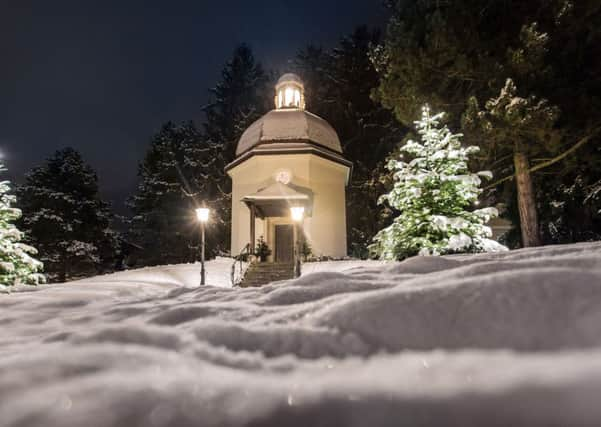How Silent Night became the sound of Christmas 200 years ago tonight


Probably the most recognisable festive soundtrack to date, Silent Night has summed up the spirit of Christmas for generations.
First performed in public on December 24, 1818, the lyrics were written by a young pastor from Salzburg, Austria, called Joseph Mohr, while teacher and organist Franz Xaver Gruber composed the melody.
Advertisement
Hide AdAdvertisement
Hide AdSince then, the song has been translated into 300 different languages and dialects, and been given UNESCO Intangible Cultural Heritage status.
It was first translated into English in 1863 and was famously sung in the trenches in the First World War during the Christmas truce of 1914 between British and German soldiers.
Last year, Silent Night was named as the UK’s second favourite carol in an annual poll by Classic FM, losing out on the top spot to O Holy Night.
Silent Night held the accolade as the nation’s favourite in 2014 and before that in 2002.
Advertisement
Hide AdAdvertisement
Hide AdGiven it’s worldwide importance, a number of events are taking place across Austria to celebrate the classic carol’s 200th anniversary today on Christmas Eve.
The carol’s resonance through the ages means there are plenty of places associated with the song in Austria that have become popular tourist destinations, especially at this time of year.
One of those locations is Mariapfarr in the Lungau region, where in autumn 1815, 23-year-old Joseph Mohr became an assistant priest in a place where his ancestors had settled in the 17th century.
A year later, in 1816, he wrote the famous song, although his authorship was only fully acknowledged in 1995, when a hand-written version of Silent Night Holy Night proved he’d written the lyrics.
Advertisement
Hide AdAdvertisement
Hide AdA highlight for tourists is the redesigned Silent Night Museum, which features a 15th century silver altar and a Christmas nativity scene with a collection of around 100 figures originating from 1750.
The small village of Arnsdorf also lays claim to having a key part in the song’s success, as the place where the melody was originally composed.
Between 1807 and 1829, Franz Xaver Gruber worked as a teacher and organist in Arnsdorf. The school he taught in still educates students and is the oldest active school building in Austria.
Since 1957, the property has also been home to the Silent Night Museum, where a traditionally decorated Rauchkuchl kitchen and a historic classroom provide an insight into Gruber’s daily life. A 25km Silent Night cycle trail connects the village to Oberndorf, another important location in the peace poem’s story.
Advertisement
Hide AdAdvertisement
Hide AdMeanwhile, it is Oberndorf that is perhaps best associated with Silent Night, as the place where visitors have the opportunity to hear the classic carol performed in its original setting.
Known around the world as the ‘Silent Night Municipality’, this is where the carol was performed for the first time.
The famous St Nikolaus Church has since been damaged by continuous flooding, but a Silent Night Chapel now occupies the same site, where, since 1953, a Silent Night commemoration has been taking place every Christmas Eve at 5pm.
Next door, the old vicarage houses the new Silent Night Museum Oberndorf, which explores the history of the song. Another magnet for visitors during the Advent period is the Silent Night Special Post Office, where it’s possible to send cards around the world with a Christmas postage stamp and a special seal.
Two centuries may have passed since the song first came into being, but as services up and down the country – and across the world – will prove tonight, its influence lives on.